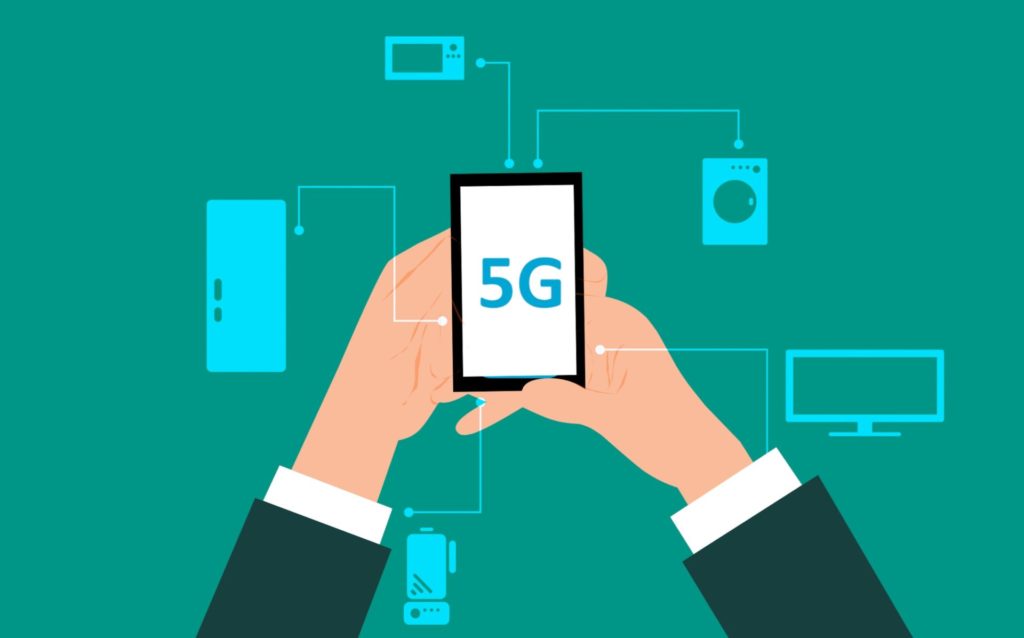Most techies geek out at the end of each calendar year as we wait in anticipation for the predictions put out from key analysts. These predictions drive our strategic planning, learning and development, and our vacation plans. But the best part is that they definitely get our creative juices flowing. While these predictions are not normally a great surprise, they can be either an assurance that strategically we are on the right track, or they can be a wake-up call that we need to make a paradigm shift if we want to stay in the game. Either way, it’s an exciting time of the year. When the year began, 5G was considered “the next big thing.” With the arrival of COVID-19, topped off by its refusal to leave, we need to reevaluate the technology impact of 5G and its role in our existing strategic plan. As we all jumped to attention and quickly adjusted to enable work from home (WFH) strategy, we assumed it would be a temporary measure.
As the months went by, we adjusted both our perspective and our strategy. Today, we find our technology, along with our mental health, is functioning in such a way that our brains are playing tricks and we have become somewhat complacent. Among all of the escalated projects, the annual planning cycles, trying to adjust vacation plans to align with upcoming projects, not to mention the reality that at some time we have to consider personal obligations, we need to ask ourselves, did COVID shove a stick in our hamster wheel? While COVID can be likened to that uninvited guest who refuses to leave, it has definitely slowed down our tendency to initiate new technology projects even before our subject matter experts have been released from the previous two projects they are doing off the side of their desks.
COVID-19, 5G, and reduced need for in-office support

As we have slowed down our pace on the technology hamster wheel, the adjustment to WFH has taken place and we are starting to see a reduced need for in-office support. The pace of equipment moves, hardware replacement, printer support, not to mention those nasty CAT5 cables that randomly break down and need to be located and replaced, has slowed. There is also the support required for boardroom technology, wireless connections to projectors, missing remote control devices, and the software booking applications themselves. We have been temporarily relieved of these duties, and our support time has quickly been dedicated to ensuring that employees have the access they need to be productive from their home offices.
But the planning challenge is becoming difficult. Under the scrutiny of regulatory compliance, governance of commercial property owners, and internal corporate administration, small percentages of employees are slowly being allowed to once again occupy their corporate offices. Today, the number of employees who have returned to work is low, and their attendance is sporadic. There is no doubt that there will be an optimal point when it will make sense to realign our technology resources back to in-office support. But the intersection of the X and Y-axis required to identify that optimal point assumes that we live in a normal world. We do not. In the interim, we run the risk of having to finance and staff two support structures that need to run in parallel.
5G to the rescue?

If the transition to 5G has not factored into your strategic IT plan, during this time of COVID-19 might be the time to research its impact. Today, upgrades can involve massive changes to both hardware and software. As we learn more and start to understand the intricacies of 5G, we can find solace in the reality that the move to 5G will mean less dependency on the latest and greatest hardware. 5G will transform us into more software-based operations. In addition, current reports indicate that we will enjoy speeds up to 100 times faster. One can only hope that this is not just sales speak and we will not experience another instance of the dichotomy between sales and delivery. So far, the data is encouraging.
5G may be just the superhero savior that we need to get us into a favorable position to support both the in-office and WFH environments. Consideration needs to be given to the security challenges associated with 5G, but technology experts are not new to managing cyber-security. So, while awareness is key, this is not our first rodeo.
We have always planned for the future, but this is different
Strategic planning is an exercise undertaken at regular intervals that is used to set organizational priorities. While we strive to factor in factual information, the pace at which technology changes means that we are often left in the precarious position of analyzing the various predictions that are available to us.
The state of the world today is one in which we support dense populations, rapid population growth, a blind eye turned to unsanitary practices within the animal trade, and easy access to global travel. While the World Health Organization takes a very scientific approach and focuses on the facts at hand, these four variables are often cited as contributing to any occurrence of a pandemic. The math could indicate that we need to become aware and cautious of the future state. Perhaps pandemics are a natural occurrence every 100 years as a natural means to control the population. Or perhaps we have created a state whereby pandemic-type viruses will become the norm. Either way, our technology plan amid COVID-19 will need to be ready if we want our businesses to survive.
5G, COVID-19, and the next strategic planning cycle
As we enter into the next strategic planning cycle, the challenge becomes the budget required to support two environments. Historically, our approach would dictate the focus on either in-office or a remote work strategy. While this has changed, we need to focus our energy and planning on what new technologies are available to ensure that we can support whatever the future state will present to us. Within all of the hot tech topics from the last few years, the one that shows promise to deliver us from the threat of increasing our financial IT budget is 5G. This is potentially the superhero that will allow us to capitalize on the transition projects and prepare us for whatever challenges the future throws at us.
Featured image: Shutterstock



